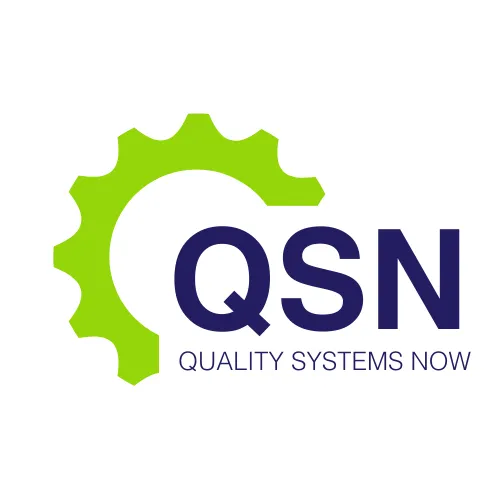NEWS

How Misaligned Processes Cost Big Money
The financial impact of misaligned processes between Quality Assurance (QA), Regulatory Affairs (RA), Operations, and Research & Development (R&D) cannot be overstated. As GMP and regulatory compliance specialists, Quality Systems Now has repeatedly observed that a lack of cross-functional collaboration directly results in compliance failures, delayed product launches, and costly remediation activities. These inefficiencies translate not only into lost revenue but also into compromised patient safety and regulatory risk.
The High Cost of Process Fragmentation
Process fragmentation is common in organisations where departments operate in silos. Each function—QA, RA, Operations, and R&D—may follow its own goals, KPIs, and timelines, often without regard to shared compliance objectives. This leads to inconsistent documentation practices, uncoordinated product development efforts, and conflicting priorities during scale-up and validation.
A typical example is seen during new product introduction. R&D may design a product without early input from RA on submission requirements or from QA on validation expectations. As a result, by the time Operations is ready to scale up, significant rework is often required to meet GMP expectations. This rework is not only resource-intensive but also delays time to market. According to industry benchmarking studies, such misalignment can increase development costs by up to 30% and delay market entry by 6–12 months.
Regulatory Non-Compliance and Inspection Failures
The Australian Therapeutic Goods Administration (TGA) and other global regulators demand documented evidence that all manufacturing and testing processes are well controlled, validated, and compliant with relevant standards. When internal processes are misaligned, these expectations are frequently unmet.
Quality Systems Now has supported clients during TGA inspections where the root causes of non-compliance were traced back to functional disconnection. For instance, in one case, the Operations team had implemented an equipment change without notifying QA or updating the validation protocol. The oversight led to a critical observation during inspection due to an incomplete validation package. The remediation effort involved retrospective validation, deviation management, and supplementary training, ultimately costing the organisation hundreds of thousands of dollars in lost production time and consulting fees.
Impact on Product Lifecycle and Stability Programs
Stability programs are another area where cross-functional collaboration is essential. QA, RA, and R&D must coordinate closely to ensure that real-time and accelerated stability data support not only product shelf-life claims but also regulatory submissions. Misalignment can lead to data gaps, inconsistencies in batch selection, or deviations in storage conditions—all of which compromise the integrity of the stability program.
In our consulting experience, we have encountered situations where R&D selected pilot-scale batches for stability without RA confirmation that the data would be acceptable for submission. Months of data collection became unusable, necessitating re-batching and re-testing. This not only delayed the submission timeline but also affected production planning and resource allocation, ultimately leading to downstream financial losses.
Cross-Functional Disconnects Lead to Human Error
One of the most insidious consequences of misaligned processes is the increased likelihood of human error. When procedures are unclear, responsibilities are not defined, and communications are inconsistent, the risk of error multiplies. For example, the absence of a harmonised Change Control system that is jointly used by QA, RA, and Operations results in changes being implemented without proper impact assessment.
Human error is not always due to lack of training or diligence. Often, it reflects systemic issues such as conflicting SOPs, ambiguous roles, and poor version control of documents. In one biopharmaceutical company Quality Systems Now supported, three different departments were using outdated versions of a critical cleaning validation protocol, leading to batch failures and an extended product hold. The financial impact was not limited to lost product—it extended to overtime pay, investigation costs, and regulatory reporting obligations.
Delayed Market Entry and Competitive Disadvantage
Time to market is a key determinant of commercial success, especially in highly competitive sectors such as biosimilars, cell therapies, and advanced pharmaceuticals. Misaligned processes between QA, RA, and R&D frequently lead to delays in dossier compilation, validation readiness, and manufacturing scale-up.
For example, RA may not receive timely updates from R&D regarding formulation changes, which in turn affects Module 3 of the Common Technical Document (CTD). When updates are delayed or inconsistent, the compilation of regulatory dossiers is compromised, resulting in submission delays. These delays are financially significant: in high-value therapeutic categories, each month of delay can translate into millions of dollars in lost revenue due to missed reimbursement cycles or competitor advantage.
Inefficient CAPA and Deviation Management
Another financial drain resulting from poor alignment is the inefficient handling of Corrective and Preventive Actions (CAPA) and deviations. When deviations occur, their investigation often requires input from multiple departments. If processes are misaligned and responsibilities are unclear, investigations become prolonged, root cause analysis is incomplete, and CAPA implementation is inconsistent.
Delayed closure of CAPAs not only leaves the system vulnerable to repeat errors but also signals to regulators a lack of maturity in the quality system. In one instance, Quality Systems Now identified 17 open CAPAs that were pending input from R&D and Operations, creating a backlog that significantly increased the risk profile of the site. The site faced a temporary halt in manufacturing activities during inspection, leading to further revenue loss and reputational damage.
Strategic Integration Through Quality by Design (QbD)
To mitigate these risks, leading organisations are embracing the principles of Quality by Design (QbD), which promotes early and systematic integration of quality and regulatory requirements into product and process development. QbD necessitates the alignment of objectives across QA, RA, R&D, and Operations. Critical Process Parameters (CPPs) and Critical Quality Attributes (CQAs) are defined collaboratively, and process validation is designed with the end goal of regulatory approval and lifecycle management.
By embedding compliance thinking from the earliest stages, organisations reduce the need for rework and accelerate timelines. Quality Systems Now has supported multiple clients in implementing cross-functional QbD frameworks that improved documentation practices, streamlined validation activities, and supported faster regulatory approvals.
Schedule a Call with Quality Systems Now
Misaligned processes are not just operational inconveniences—they are strategic vulnerabilities that drain financial resources, delay product launches, and increase regulatory risk. In a sector where quality and compliance are non-negotiable, cross-functional integration is essential. Quality Systems Now advocates for a unified approach where QA, RA, Operations, and R&D collaborate proactively throughout the product lifecycle. The financial cost of misalignment is too high to ignore—and the benefits of synchronised processes are too great to delay.
For companies seeking sustainable success in the therapeutic goods sector, aligning internal processes is not just good practice—it is a regulatory and economic imperative.
